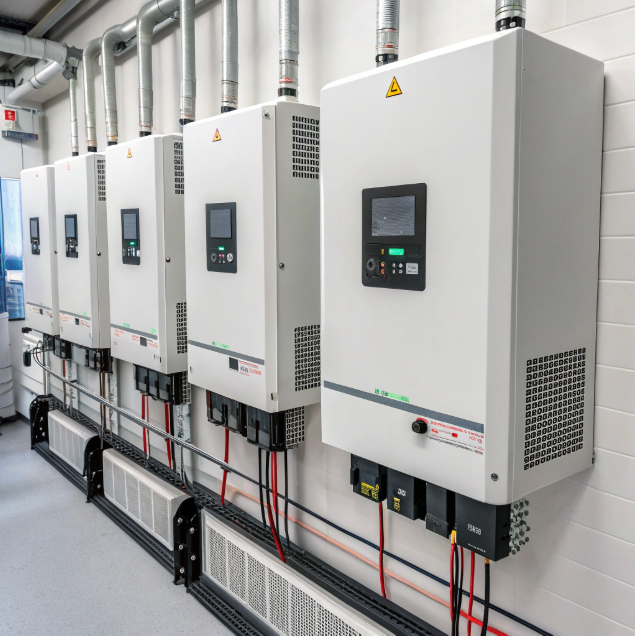The Silent Profit Killer: How an Inverter's Low MPPT Efficiency is Robbing 7% of Your Project's ROI
by
The Silent Profit Killer: How an Inverter's Low MPPT Efficiency is Robbing 7% of Your Project's ROI
Ever installed a solar array only to discover your energy yields are underwhelming? You’re not alone.
Low MPPT efficiency silently drains energy harvest, directly cutting into your project’s financial returns by up to 7% due to imperfect tracking of solar panel output under varying conditions.
Modern inverters promise peak performance, but not all deliver. Let's uncover why MPPT efficiency[^1] isn’t just a technical spec—it’s your bottom line.
"Stacking" Error: The Most Common Mistake When Pairing Inverters with Storage Batteries?
Are you unknowingly crippling your solar + storage system’s potential with a basic oversight?
Incorrectly “stacking” inverters with batteries often leads to compatibility issues, reduced efficiency, and even system failures, costing you both energy and reliability.
Understanding the "Stacking" Challenge
Many installers assume that any inverter can seamlessly pair with any battery—but that’s far from true. Incompatible communication protocols, voltage mismatches, and firmware issues can silently degrade performance.
| Common "Stacking" Mistakes | Impact on System |
|---|---|
| Protocol Mismatch (e.g., Modbus vs. CANbus) | Prevents battery charging/discharging |
| Voltage Range Incompatibility | Reduces battery lifespan or causes shutdowns |
| Firmware/Software Conflicts | Leads to erratic behavior or total failure |
Ensuring your inverter and battery share the same communication language is paramount. For example, using a hybrid inverter that supports only lead-acid protocols with a modern lithium battery will result in suboptimal charging cycles and reduced ROI.
Moreover, oversizing or undersizing the battery bank relative to the inverter’s capacity can lead to inefficient energy transfer. Always refer to manufacturer pairing guides—generic assumptions are a recipe for financial loss.
Microinverter vs. String Inverter vs. Power Optimizer: The Unbiased Guide for 2025 Projects
Still unsure which inverter technology is right for your next solar installation?
Microinverters maximize shading tolerance and panel-level monitoring, string inverters offer cost-efficiency for uniform arrays, and power optimizers balance both—select based on shading, budget, and scalability needs.
Breaking Down the Technologies
Each inverter type serves distinct scenarios. Microinverters (e.g., Enphase) excel in partially shaded or complex roof designs, as each panel operates independently. However, they come at a higher upfront cost.
String inverters (e.g., SMA, Fronius) are economical for large, unshaded arrays but suffer from the "lowest panel effect"—where one shaded panel drags down entire string performance.
Power optimizers (e.g., SolarEdge) mitigate this by optimizing each panel’s output while still using a central inverter, striking a middle ground in cost and performance.
| Technology | Best For | Key Consideration |
|---|---|---|
| Microinverter | Shaded/complex roofs | Higher cost, panel-level data |
| String Inverter | Simple, large arrays | Cost-effective, prone to shading losses |
| Power Optimizer | Balanced performance | Optimized per panel, central inverter |
For 2025, consider future expansion: microinverters[^3] simplify adding panels, while string inverters[^4] may require oversizing initially. Also, monitor compatibility with emerging battery tech and smart grid requirements.
Is Your Inverter Supplier Ghosting You? A 5-Point Checklist for Vetting Their Post-Sale Technical Support
What happens when your inverter fails and your supplier goes silent?
Vet inverter suppliers by verifying their technical support responsiveness, warranty terms, firmware update policies, spare parts availability, and user community feedback to avoid costly downtime.
Ensuring You’re Not Left in the Dark
Post-sale support is where many projects falter. Begin by checking the supplier’s average response time for technical queries—delay here means extended system downtime.
| Checklist Item | Why It Matters |
|---|---|
| 24/7 Support Availability | Solar issues don’t keep business hours |
| Clear Warranty Terms | Avoid loopholes that leave you uncovered |
| Regular Firmware Updates | Ensure compatibility and security |
| Spare Parts Accessibility | Reduce repair wait times |
| Active User Communities | Crowdsourced solutions and experiences |
A supplier without a robust support ecosystem can turn a minor inverter fault into a project-halting catastrophe. For example, a firmware bug that isn’t patched promptly can compromise entire fleets of inverters.
Always request references or case studies from existing clients. If they can’t provide them, consider it a red flag.
Conclusion
Maximize solar ROI[^5] by prioritizing MPPT efficiency, compatibility in storage pairing, informed technology selection, and vetting supplier support—every percentage point counts.
[^1]: Understanding MPPT efficiency is crucial for maximizing energy harvest and ROI in solar projects.
[^2]: Learn how to check compatibility to maximize efficiency and lifespan of your solar system.
[^3]: Explore the benefits of microinverters for shaded roofs and panel-level monitoring.
[^4]: Gain insights into string inverters' cost-effectiveness and their limitations in shaded conditions.
[^5]: Discover the critical factors that impact your return on investment in solar energy.
Popular Posts
You may also be interested in:




